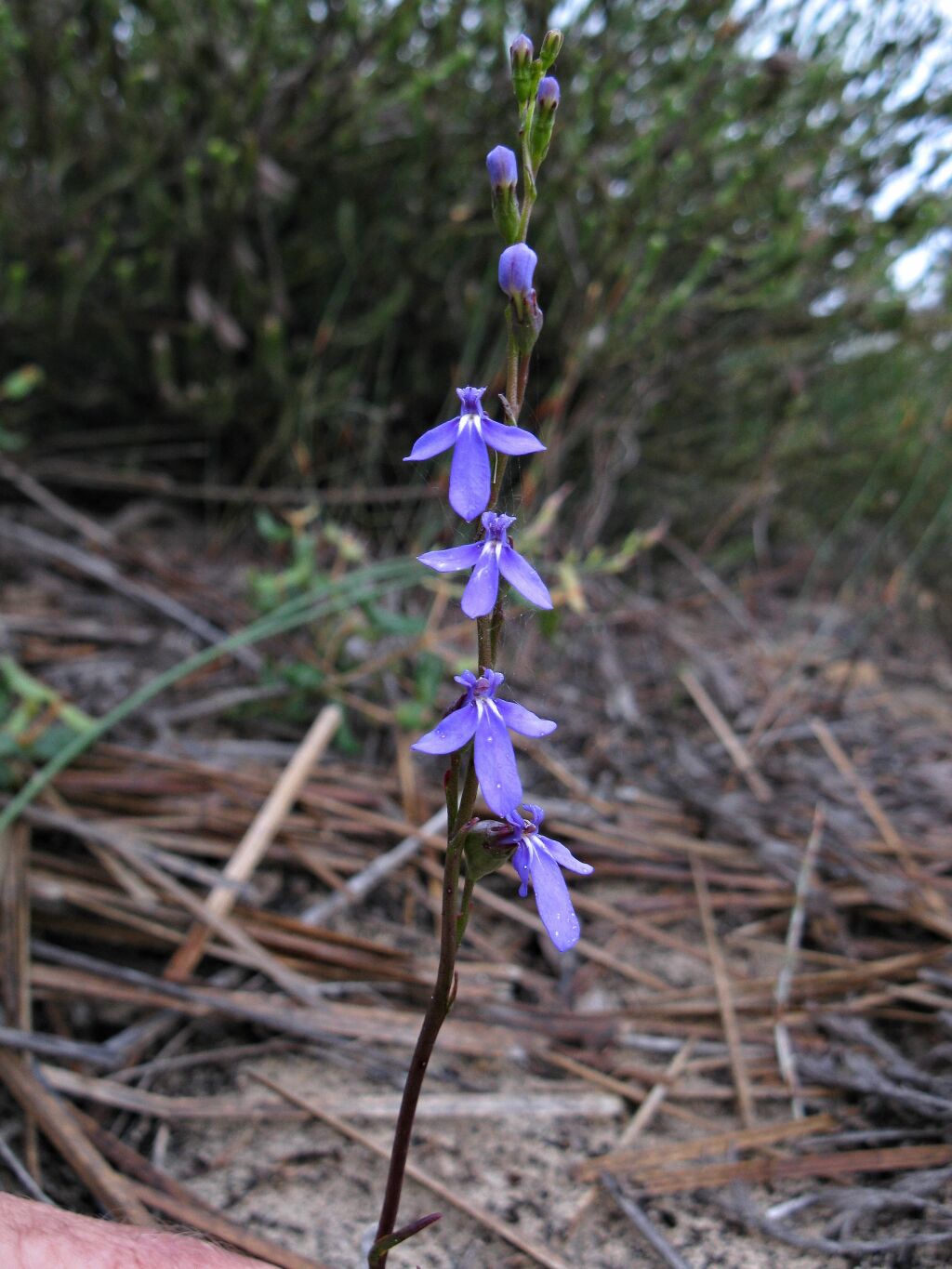Lobelia gibbosa
Labill. Tall LobeliaErect succulent or semi-succulent glabrous annual 10–60 cm high, often red-tinged; stems solitary or several from the base. Leaves linear to narrowly oblanceolate, rarely narrowly lanceolate, 3.5–35(–65) mm long, 0.2–2 mm wide, usually reduced towards inflorescence, entire and withered at anthesis; petiole indistinct. Flowers bisexual, in terminal and sometimes axillary 2–10-flowered, 1-sided racemes, axis often sinuous; pedicels 2–9 mm long, glabrous. Calyx-lobes 3–5 mm long, entire; corolla 2-lipped, 10–20 mm long, blue, upper 2-lobes short, strongly recurved, lower 3 lobes spreading, rarely decurved, narrowly elliptic, oblanceolate, narrowly lanceolate or oblong, the central lobe longest, 4–9 mm long, 1–3.5 mm wide, usually narrowly elliptic, acute, lateral lobes falcate, tube 4–9 mm long, split virtually to base, papillose to minutely pubescent internally mainly along central channel; filaments 4–6.5 mm long, anther tube 2.4–4 mm long. Capsule obliquely obovoid to obliquely obconical, 5–12 mm; seeds brown, ellipsoid long to oblong, usually irregularly angular, 0.2–0.3 mm long, reticulate. Flowers Oct.–Mar.
LoM, MuM, Wim, GleP, Brid, VVP, VRiv, GipP, OtP, WaP, Gold, CVU, GGr, DunT, NIS, EGL, EGU, WPro, HSF, HNF, OtR, Strz, MonT, HFE, VAlp. All States. Occurs on well-drained sites in heathland, woodland and sclerophyll forests, sometimes behaving as a disturbance ephemeral.
A remarkable feature of this species is that uprooted specimens remain turgid and even produce flowers for up to a month or so after collection.
Albrecht, D.E.; Walsh, N.G. (1999). Campanulaceae. In: Walsh, N.G.; Entwisle, T.J., Flora of Victoria Vol. 4, Cornaceae to Asteraceae, pp. 553–553. Inkata Press, Melbourne.
 Spinning
Spinning


